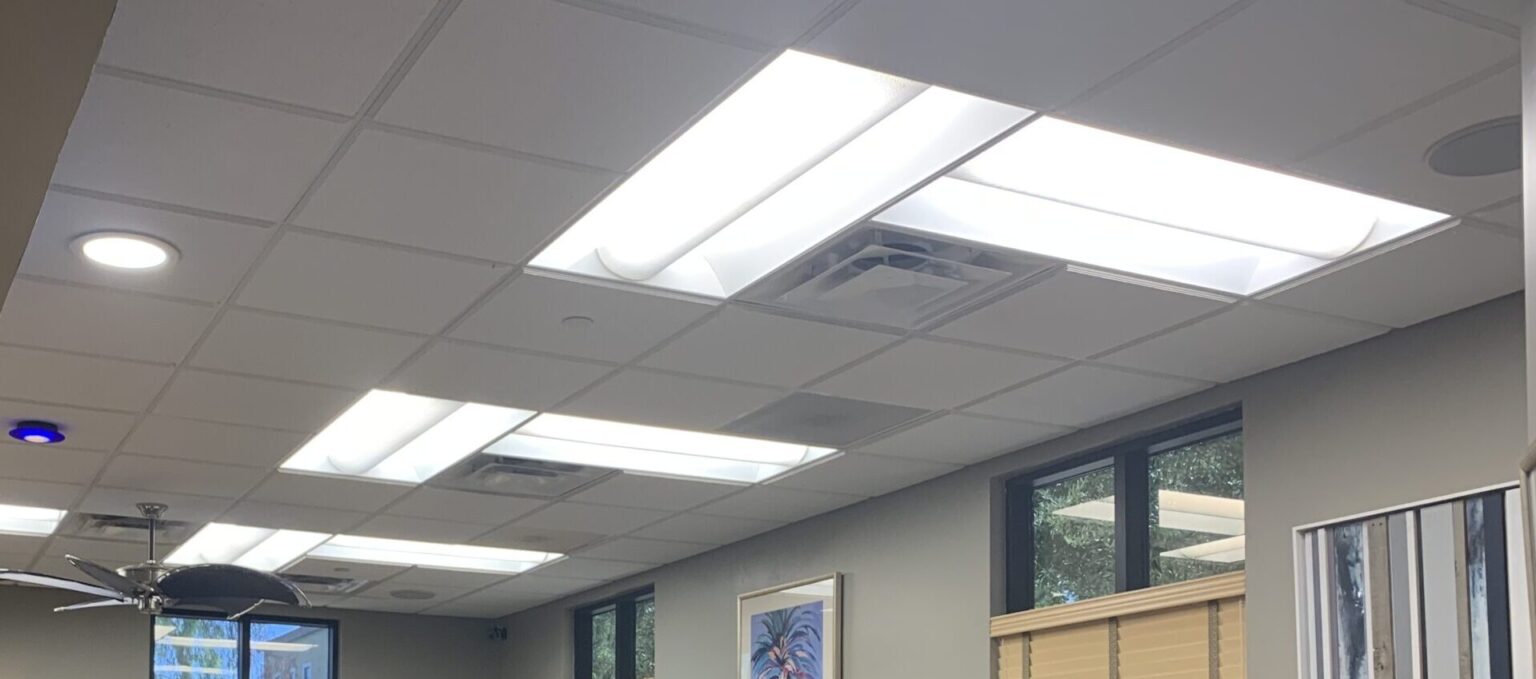
For those of you that have not heard about the magic of LED lighting, this is the perfect breakdown of what they are and what makes them great. First, LED stands for light emitting diodes, which refers to the way electricity flows through the power source to create light. In fact, the electricity specifically flows through two electrodes, referred to as an anode and a cathode. What makes LEDs so great is that the diodes are constructed of semi-conductive materials and do not use any type of filament. Not only does that make them more energy efficient, but it makes them significantly safer to use. That is just one of the many benefits of LED bulbs.
LED Lifespan & Quality
There are a ton of benefits to choosing LED lighting options over the other competing products. One of the primary benefits is the significantly longer lifespans that can range from 25,000 to 100,000 hours or more. That means little to no maintenance costs, as the bulbs do not need replacement for long periods of time. In addition, LEDs are the most energy efficient option on the market right now, requiring much lower wattage to provide the same, if not better, light quality as its competitors. Of course, that means that you are saving money on your energy bill, in addition to needing fewer bulbs over a longer span.
If you’re still not convinced that LEDs are the way to go, then no worries, there’s even more advantages. The light quality emitted by LED bulbs is far superior to any other option in the industry, and LEDs feature a wide range of color temperatures, allowing you to determine the aesthetics you want. Although the color rendering index, or CRI, is dependent on the particular light fixture that is being used, LEDs typically have a CRI range of 65-95. Not to mention, due to the energy efficiency of LED products, you can opt for a much higher lumen level at a much lower kWh (kilowatt hours) rate to brighten your environment while reducing energy costs, as well.
LED Efficiency & Savings
Furthermore, LEDs feature instant on/off capabilities, which simply means that they do not require any warm up or cool down times. You’ve probably experienced an instance where you’ve turned the lights on in a warehouse or gymnasium and had to wait a few minutes for it to become lit. That is not necessary with LED bulbs, which means heat is not required for operation, leading to cooler temperatures in your facilities, which also saves you on your energy bill by not exhausting your HVAC system in the process. The instant on/off feature also leads to a longer lifespan, while producing smooth and steady light with no flicker.
LEDs emit light with a 180-degree spread, which is perfect for directional lighting – the usual desire for illumination. They do not require reflection or redirection to create the perfect aesthetics, adding to its incredible efficiency. In addition to the limited heat LEDs product, they do not produce any infrared or UV emissions. Instead, they convert a majority of their energy usage directly to light.
While the initial cost of LED bulbs is often times higher than competing products, the return on investment (ROI) is significantly higher over time. By requiring almost no maintenance and lasting much longer than other products, it seems foolish not to opt for the more advanced technology. Not to mention, they are much more efficient and can help you save in other areas, as well.
